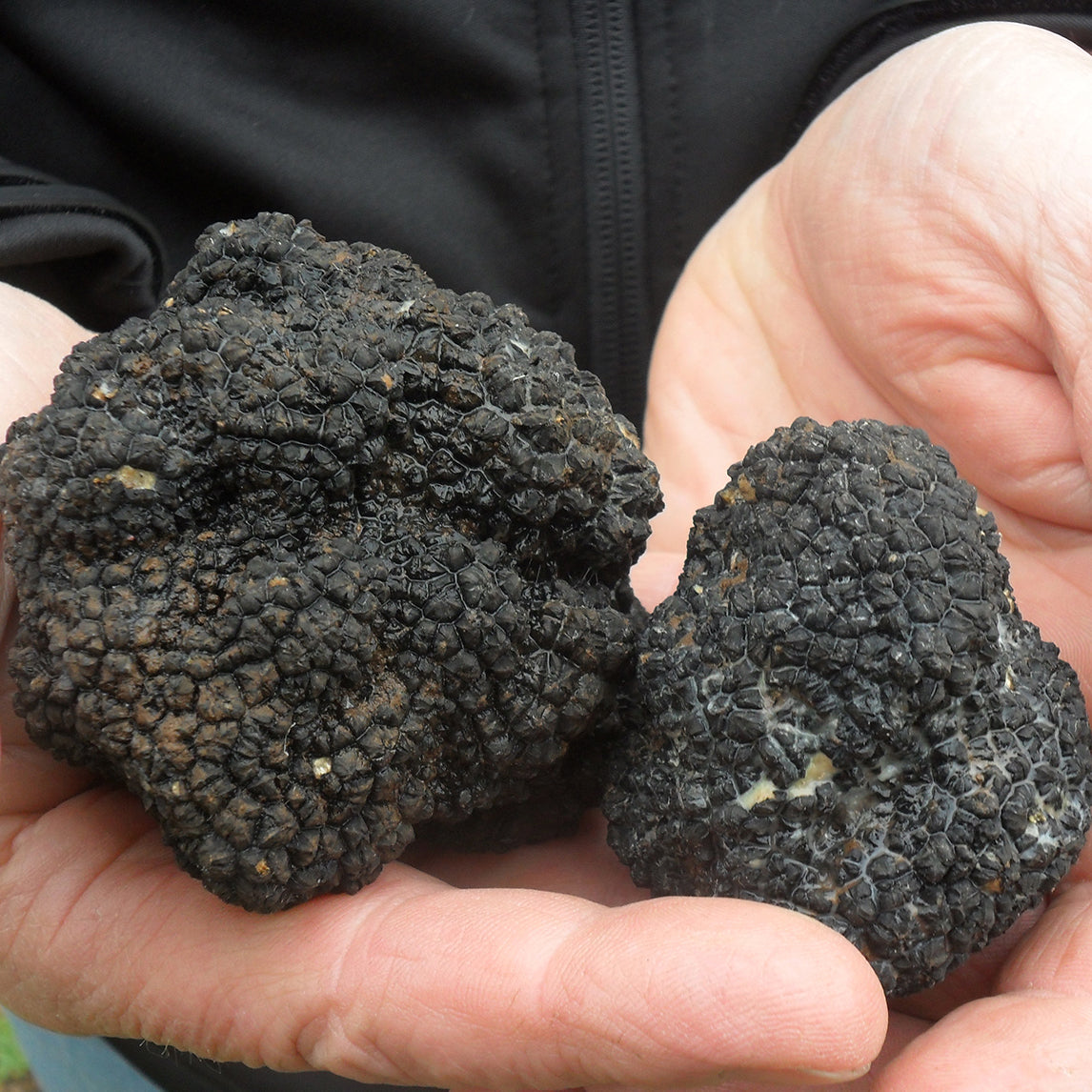
Truffles are a gourmet delicacy prized for their unique aroma and flavour. In Australia, cultivating truffles involves fostering a symbiotic relationship between a host tree — such as the Holm Oak (Quercus ilex) for French Black Truffles (Tuber melanosporum) or the Stone Pine (Pinus pinea) for White Bianchetti Truffles (Tuber borchii) — and the fungal mycorrhiza.
Success relies heavily on site selection, soil preparation, tree care, and patience.
1. Site Selection
A suitable climate is essential for truffle production, with warm to hot summers and cold winters required to create the clear seasonal contrast that triggers truffle formation for both French Black and White Bianchetti truffles. Choosing a site with a north- or west-facing slope is ideal to maximize sunlight exposure, while elevation or raised garden beds can help improve soil drainage and air circulation. It is crucial that trees receive full sun, with at least 6–8 hours of direct sunlight each day, to ensure healthy growth and successful truffle development..
2. Soil Preparation
Light, well-draining soils are essential for truffle trees to prevent root rot, while soils enriched with compost and well-rotted manure supply the necessary nutrients without the risk of over-fertilization. It is critical to maintain an alkaline soil environment, targeting a pH between 7.5 and 8.3 to ensure successful truffle colonization. To prepare the planting area, aerate the soil to a depth of 20 cm within a circle about 2 metres in diameter, and incorporate 20 kg of agricultural lime thoroughly using a fork. Allow around six months for the lime to adjust the soil pH, and continue to test the pH annually, reapplying lime as needed to maintain optimal alkalinity.
3. Planting Instructions
To plant your truffle tree, dig a hole twice the diameter and twice the depth of the tree’s pot, and backfill it halfway with lime-enriched soil. Carefully remove the tree from the pot without disturbing the roots and place it into the hole, making sure that the soil surface is level with the pot’s original media level. Continue backfilling firmly, pressing down the soil to eliminate any air pockets, and water thoroughly after planting. If needed, stake young trees to provide support against wind and to encourage upright growth.
4. Early Care and Maintenance
During the first year, water regularly, especially during dry periods, to help the tree establish strong roots. Deep, infrequent watering is best as it encourages deeper root growth. Avoid using synthetic fertilisers, and instead apply a weak solution of seaweed extract once a month during the growing season to support healthy development. Weed regularly around the base of the tree to reduce competition, but do not apply mulch, as decomposing organic material can acidify the soil and negatively impact truffle development.
5. Long-Term Management
Annual soil testing is critical to monitor and maintain the appropriate soil pH for truffle production. Apply additional lime as needed to ensure the soil remains optimally alkaline. It is also important to regularly monitor for root-eating pests and fungal diseases, using organic pest control methods wherever possible to protect the soil’s beneficial microflora.
6. Harvesting Truffles
Truffles typically take 4–5 years to mature before the first harvest. French Black Truffles ripen from late June through to August, while White Bianchetti Truffles usually ripen slightly earlier, beginning around April to May. To detect truffles, carefully smell the soil around the roots for the distinct sweet, earthy aroma. When harvesting, use gentle digging tools or trained dogs to locate the truffles without damaging the delicate roots or the mycorrhizal network.
Special Notes for Each Tree Type
| Tree Type | Truffle Type | Key Notes |
|---|---|---|
| Holm Oak (Quercus ilex) | French Black Truffle (Tuber melanosporum) | Holm oaks are hardy, drought-tolerant once established, and well-suited to alkaline soils. |
| Stone Pine (Pinus pinea) | White Bianchetti Truffle (Tuber borchii) | Stone pines are slower-growing, eventually producing edible pine nuts alongside truffles, and they also prefer very well-drained, sandy soils. |
Additional Pro Tips
- Training dogs: If serious about harvesting, consider training a dog to sniff out your truffles!
- Avoid mulch: Organic mulches acidify soil which can impact truffle formation.
- Avoid fertilisers: Excess nutrients (especially phosphate) harm the delicate truffle fungi.
- Patience is key: It can take 4–6 years to see consistent yields, but properly maintained trees can produce for decades!



